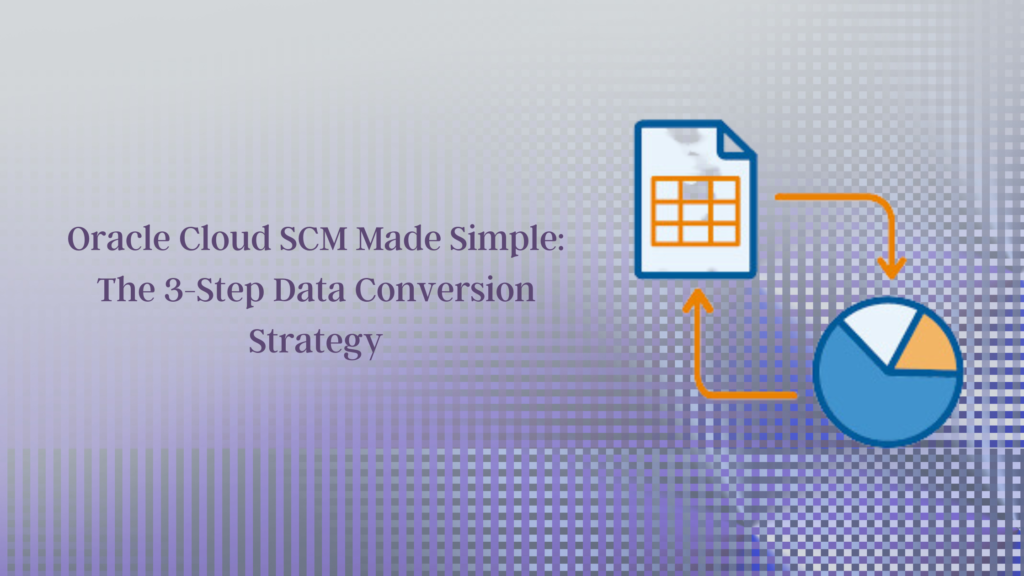Data Conversions to Oracle Cloud Supply Chain Management: As Easy as 1 – 2 – 3

Introduction:
The journey to Oracle Cloud Supply Chain Management (SCM) can be an exciting one for businesses looking to streamline their operations, enhance efficiency, and embrace the power of cloud-based solutions. A crucial step in this process is data conversion, the process of moving your existing data into the Oracle Cloud SCM platform seamlessly. In this blog post, we’ll explore how data conversions to Oracle Cloud SCM can be as easy as 1 – 2 – 3, with a step-by-step guide to help your business make a smooth transition.
Step 1: Data Assessment and Preparation
Before embarking on any data conversion project, it’s essential to perform a thorough assessment of your existing data and prepare it for migration. Here’s what you need to do:
a. Data Inventory: Identify all the data sources and types relevant to your supply chain processes. This includes inventory data, procurement records, order histories, and more.
b. Data Cleansing: Ensure data accuracy by identifying and rectifying any inconsistencies, duplicates, or errors in your data.
c. Data Mapping: Map your existing data fields to their corresponding fields in Oracle Cloud SCM. This step is critical for preserving data integrity during the conversion.
d. Data Validation: Verify the accuracy of your data after cleansing and mapping. Validation helps prevent issues during the conversion process.
Step 2: Data Extraction and Transformation
With your data prepared, it’s time to extract and transform it for Oracle Cloud SCM compatibility. This step involves several crucial tasks:
a. Data Extraction: Extract data from your current systems or databases while maintaining data integrity.
b. Data Transformation: Convert data formats, structures, and values to match the requirements of Oracle Cloud SCM. This may involve data enrichment, formatting, and data type conversion.
c. Data Migration Tools: Utilize data migration tools and scripts to automate the transformation process. These tools can significantly streamline the conversion process.
d. Test Runs: Conduct multiple test runs to ensure the accuracy and completeness of your transformed data. Address any issues that arise during testing.
Step 3: Data Loading and Validation in Oracle Cloud SCM
Once your data is transformed and validated, it’s time to load it into Oracle Cloud SCM. Here’s how to do it effectively:
a. Data Loading: Use Oracle Cloud SCM’s data import and loading features to transfer your data into the system. Ensure that you maintain data relationships and dependencies.
b. Data Validation: After loading, perform thorough data validation within Oracle Cloud SCM to confirm that your data is correctly integrated with the platform.
c. User Training: Train your SCM team and end-users on how to work with the newly converted data within Oracle Cloud SCM. This step is crucial for a smooth transition.
d. Ongoing Support: Provide ongoing support to address any issues or questions that arise after the conversion. This ensures that your team can fully leverage the capabilities of Oracle Cloud SCM.
Conclusion:
Converting your data to Oracle Cloud Supply Chain Management doesn’t have to be a daunting task. By following the straightforward 1 – 2 – 3 approach outlined in this blog post, you can simplify the process, ensure data accuracy, and seamlessly transition to a more efficient and powerful supply chain management solution. Embrace the future of supply chain management with Oracle Cloud SCM and make data conversions a breeze.

Leave a Reply